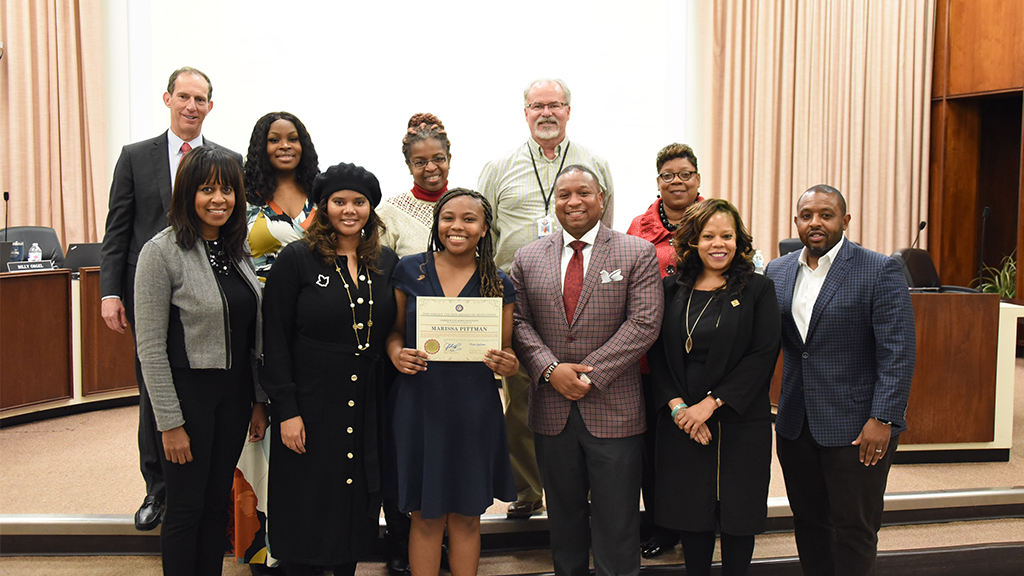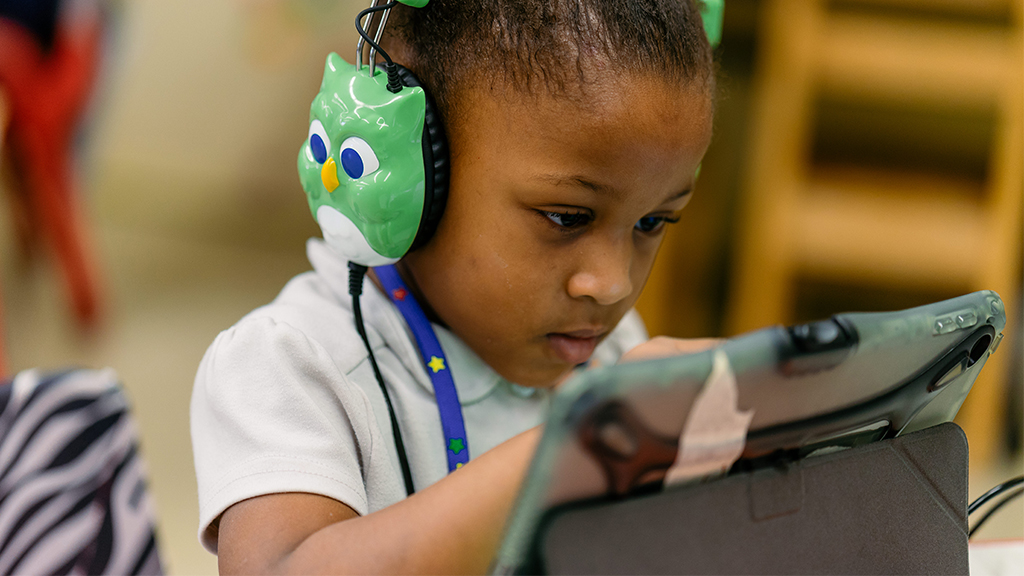
All photos courtesy of Shelby County Schools
The district leadership team for Tennessee’s Shelby County Schools is uncompromising in its mission to prepare all its students for success in learning, leadership, and life. The challenges in meeting these goals can be numerous and complex for a 113,000-student school district with many needs.
But this year’s winner of NSBA’s Council of Urban Boards of Education (CUBE) Annual Award for Urban School Board Excellence continues to make profound advancements for its students. At all times, the leadership is led by a commitment to good governance practices, strategic policies, and effective programs. These programs are designed to ensure student achievement, equity for all, and support for the whole child.
“We spend a lot of time thinking, ‘Are we making sure that there’s equity across the board, are we making sure that families are engaged in the work, and are we making sure that our community partners are engaged to help push us along the way,’” says Board of Education Chair Miska Clay Bibbs.
“What’s our end goal?” is a frequent, guiding question for the board, Bibbs adds. “And then we push the administration on ‘How do we get there?’”
Key policies and programs recently advocated by the nine-member Shelby County School Board and enacted by Superintendent Joris Ray have focused on:
- Reading readiness by third grade.
- Districtwide social-emotional and mental health supports.
- Expanded access to rigorous academic instruction.
- African American male student empowerment.
- A landmark one-to-one digital technology rollout.
- Assistance for students and families during the national health crisis.
“In presenting this award, CUBE celebrates the intentional work that urban school boards are doing to prepare all students for academic achievement and life success,” says CUBE Steering Committee Chair Jacinto Ramos Jr., a trustee for Texas’ Fort Worth Independent School District. “Shelby County Schools is an outstanding example of the commitment that school leaders can and must exercise in advancing educational access and equity while confronting some of the most challenging conditions in public education.”
“Shelby County Schools’ recognition is evidence that a strong school board and superintendent team that practices the best in school board governance is a powerful force for advancing urban education,” says Anna Maria Chávez, NSBA’s executive director and CEO. “This critical partnership is a necessary component to prepare all students for success in school and beyond.”
Merger and demerger
The current Shelby County Schools came into existence in 2013, following a merger between the Memphis City Schools, a district with a high-poverty, majority Black enrollment, and the Shelby County School District, which was better resourced and mostly white. In 2014, that union experienced a demerger when six suburban municipalities in the merged school district broke away to form independent school systems. The new school systems took with them some of the county’s most valuable property as their tax base.
Those events left Shelby County Schools, the largest district in Tennessee, with severe financial and academic challenges. The leadership team’s work in securing its financial and management stability and its progress in raising student academic performance was recognized by CUBE in 2017. The district’s dynamic work has continued over the past three years—and intensified in response to the coronavirus pandemic.
Families depend on us
“COVID-19 shifted the way we think about how you educate, what your school building looks like,” says Bibbs. “More than ever, we were made aware that families depend on us every day, regardless of whether kids are in school or not. We had to make sure we were set up for them.”
Although statistics show that 48 percent of Shelby County Schools students live below the poverty line, that doesn’t necessarily mean that the other 52 percent are “living in great means,” Bibbs says. For many families, “it just means that someone made a dollar over the poverty line.”







Share this content